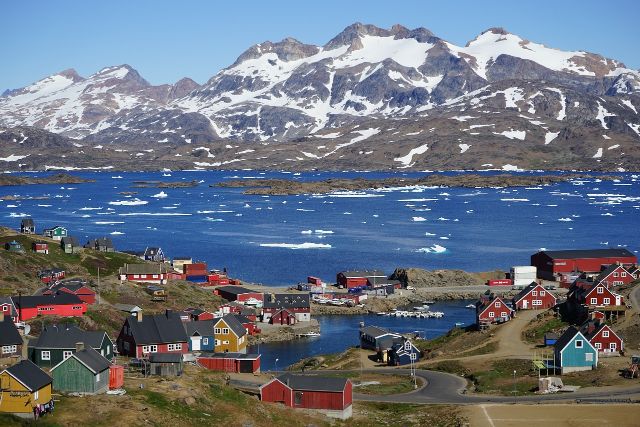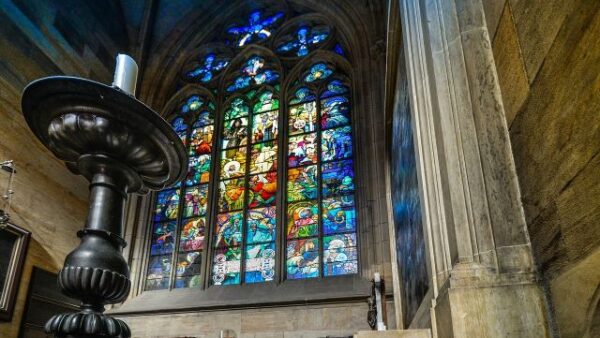History of Greenland
History of Greenland-Early Inhabitants
Greenland, the largest island in the world, has a history as rich and varied as its icy landscapes. From the earliest inhabitants braving the Arctic elements to modern communities facing climate change, Greenland’s story reveals humanity’s resilience. Let’s explore the islands’ past through personal anecdotes and cultural insights rather than dry facts alone.
The Viking Era
Way back in the late 10th century, a fiery fellow named Erik the Red was kicked out of his hometown of Iceland for some bad behavior – murder, if the stories are to be believed. Never one to sit idle, old Erik decided the best course of action was to sail west into the unknown. After months at sea braving the bitter North Atlantic winds, he finally spotted a shoreline in the distance.
Upon landing, he took a gander at the snow-draped landscape and thought to himself “this’ll do nicely.” Never mind that the so-called “green hills” were covered almost year-round with a thick blanket of white – the name “Greenland” had a nicer ring to it, and he knew it would help sell the place to any prospective settlers. With his sales pitch in place, Erik wasted no time in establishing the first Viking colony on that unforgiving island.
Life wasn’t easy for those Norse homesteaders. Between the freezing temps, scarce resources, and isolation from the motherland, you can bet more than a few feeling of longing for the old sod set in during those long Arctic nights. But those Vikings were nothing if not tough and resilient. They adapted cleverly, building sturdy sod farms to protect their livestock from harsh storms, and thriving in their little communities along the coasts. During the summers, they even traded hides and ivory with the indigenous Inuit folk who had somehow managed to carve out an existence in that barren terrain. For over four centuries, they persisted against all odds in their Greenland outpost.
Of course, nothing gold can stay. By the 14th century, it seems climate change took a turn for the worse, making growing seasons more unpredictable. Supply ships from Norway also grew less frequent as shifting politics closer to home took priority. With their imported goods and contact with kinsmen abroad dwindling to a trickle, the isolated settlers found themselves in dire straits. Archaeological evidence suggests their livestock and crops failed, forcing the colonists to gradually abandon their settlements in search of greener, or at least less frozen, pastures. The last written records of Vikings in Greenland date to around 1410 – after that, they seemingly vanished without a trace.
Those tenacious Norse traders and farmers left behind only clues of their amazing accomplishment: stone ruins of turf-topped farmhouses half-buried under drifting snows. Their saga stands as proof that even in the harshest frontiers, humanity’s indomitable spirit can carve out civilization. The barren cliffs and fjords those hearty Vikings once called home now echo only with the cries of seabirds, but their legacy will live on as long as folks continue to marvel at their intrepid dedication to settlement in the farthest reaches of the Arctic world.
History of Greenland-Christianity and Cultural Exchange
Legend has it Vikings like Erik the Red, drawn by tales of adventure, discovered fertile fishing grounds and established seasonal settlements. Ruins like Brattahlid remain, transporting visitors back to the Norse golden age through artifacts and oral histories passed through generations.
Colonial Era-History of Greenland
When Christianity’s promise of salvation reached Greenland’s shores, isolation gave way to exchange. Mission diaries describe tight-knit communities grappling with change — some welcomed the neue ideas while elders clung to tradition. Cultural syncretism took hold.
Towards Self-Governance
As colonial appetites grew, crown-backed expeditions yielded maps and treaties, not without costs. Danish governance modernized laws and language yet stoked independence stirrings, as local chronicles attest. Greenland found its voice amid change.
Contemporary Greenland
World War II saw Greenlanders take up arms in defense of sovereignty in exchange for Allied protection, as letters home express. The storied Thule airbase endures as a trophy of Arctic strategic worth, for better or worse.
Home rule dawned with high hopes, yet growing pains included. Voices like Sara Olsvig ensured cultural vibrancy while global trade brought wealth and waste in equal measure, as government reports show. A future poised between opportunity and threat began to crystallize.
Art, like K’aisersuaq Simonsen’s sculptures, merges ancestral pride with contemporary concerns like climate change impacts. Tourism, fishing and mining offer promise if balanced with environmental stewardship, as local panels advocate. Greenland moves ever closer to full autonomy through courageous acts of self-determination…
Originally posted 2023-08-01 09:06:31.




